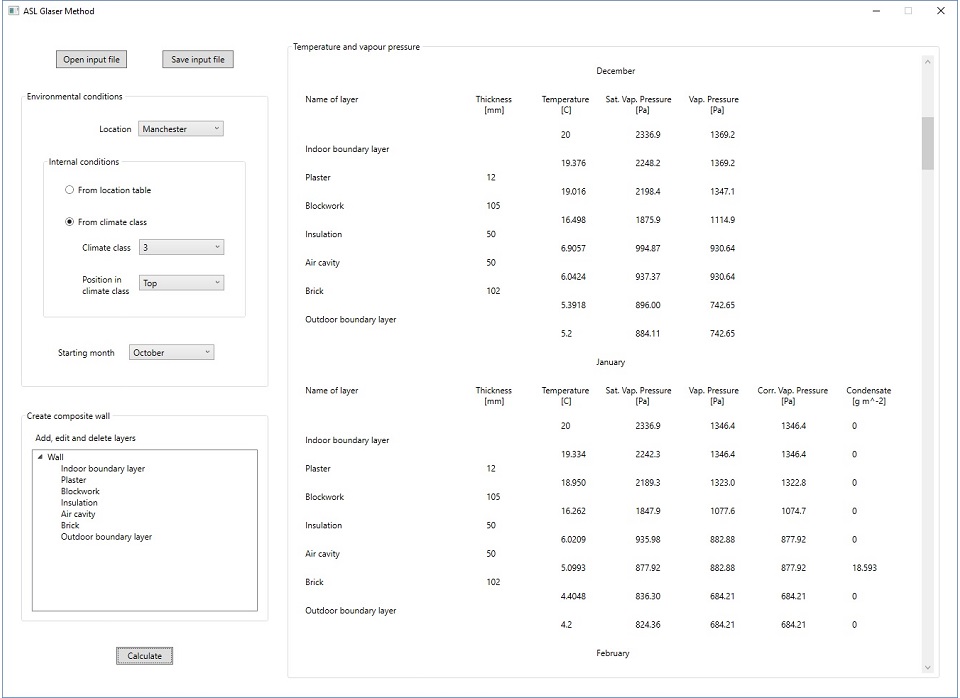Case Study – Glaser Method Windows Application
The challenge
Many building materials are porous and will take up moisture through surfaces
exposed to the moist air on the inside and outside of the building. The conditions
which lead to condensation in building materials (interstitial condensation) are
complex, but we can make useful assessments of condensation risk by assuming that
the movement of moisture occurs purely by vapour diffusion until the relative
humidity is equal to 100% and condensation occurs. The method set out in
BS EN ISO 13788:2012 is based on this assumption. The method uses monthly mean
external conditions to calculate the amount of condensation or evaporation in each
of the twelve months of the year. A check can then be made on whether condensation
accumulated during the cold months is cleared by evaporation during the rest of
the year. The calculations are time-consuming if done by hand but can be easily
automated in a computer program.
The solution
Atkinson Science has created a Windows application which implements the method in
BS EN ISO 13788:2012. The application connects to a database which stores the
thermal and vapour resistances of many building materials and membranes. The user
builds up the layers of a composite structure, as shown in the figure below, and
specifies the monthly mean temperature and relative humidity on each side of the
structure. At the click of a button, the application calculates the variation in
temperature and vapour pressure through the structure and the mass of condensate
(if any) from one month to the next. The user can store the input in a text file
and read it back into the application.

The benefits
The Windows application provides engineers with a rapid and easy to use software
tool for assessing the risk of interstitial condensation based on the method set
out in BS EN ISO 13788:2012.